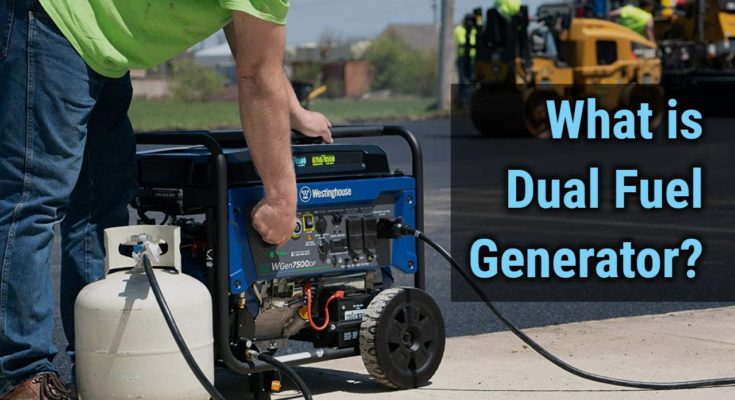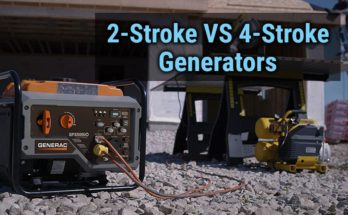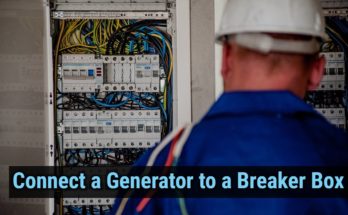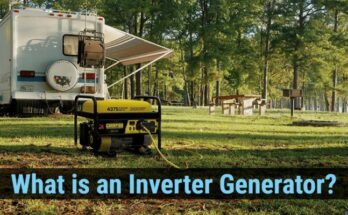Generators are the most sought after equipment when the power goes out, and it keeps all the essential appliances of your house running. They are available in different types and various sizes. In this article, we have discussed the generators which use two fuels, the dual-fuel generators.
Imagine a critical blackout situation where the power flow is important, and the generator runs out of fuel. And it so happens that the fuel is not easily available. So, you are stuck with the dead generator. But, if you have a dual fuel generator, then the depletion of one fuel won’t limit the power availability as another fuel can take its place and keep the generator running.
A dual fuel generator can run on two individual fuels or their mixture. Keep reading to know almost all things related to dual-fuel generators.
Table of Contents
How Dual Fuel Generators Work?
Working of a dual fuel generator is no different than a single fuel generator. Similar to every other generator, dual fuel generators have engines, alternators, voltage regulation circuits, and cooling mechanisms. The difference is only in the fuel they can use. The engines and carburetors are specially modified to work on two or three different fuels or a combination of them.
These generators can run on either one fuel at a time or a combination of fuels to achieve the best power output and better efficiency. When you want to change the fuel, they are equipped with an easy-to-use switch to make the change.
These dual fuel generators, when the combination of two fuels are used, start on the one fuel, and this is to warm up the generator. Then, after the warmed up period is over another, fuel will be introduced to the first until the suitable mixture of both the fuels is not achieved. As they can also run on a single fuel, it makes them highly reliable, and if you don’t have access to one fuel, then another one can be used.
Different Types of Fuels Used
Dual fuel generators can use a combination of any fuels mentioned below. Every fuel has its pros and cons. So, it is important what you should know and what to expect from which fuel.
1. Gasoline
Gasoline is the most general fuel used by most generators due to its easy availability almost everywhere, but it may be hard to get your hands on it in emergencies as it is the most common, so many people will buy it from a gas station, and they may run out of gasoline. Moreover, they are expensive, and the high cost will become apparent in the long run.
Another thing worth noticing about gasoline is that they have a low shelf life. You can’t store them for longer periods. What you can do is add some stabilizer to it to extend its lifetime. Also, due to their highly inflammable property, it becomes extremely dangerous to store them in large quantities. Gasoline doesn’t burn cleanly, and it releases many toxins in the environment.
2. Diesel
Diesel will also be easily available at the gas station, same as gasoline. The price point is less for a diesel generator, and it also burns more efficiently. This means the operating cost will reduce significantly. And the savings will instantly reflect when used for larger applications. Another plus point is that they have a rapid kick in time. That’s why you will find that most of the emergency generators at a hospital or a police station runs on diesel.
And that is why, if one of the fuels of a dual fuel generator is diesel, then the generator is first started on it, and then another fuel is introduced. They can be stored for a year or two without any additives and are good to store at the site as they are less flammable than gasoline. Note, diesel doesn’t burn clean, and that’s why they may face some problems to pass the EPA standards. Also, keep in mind that diesel engines are noisier and that they work well in colder climates too.
3. Propane
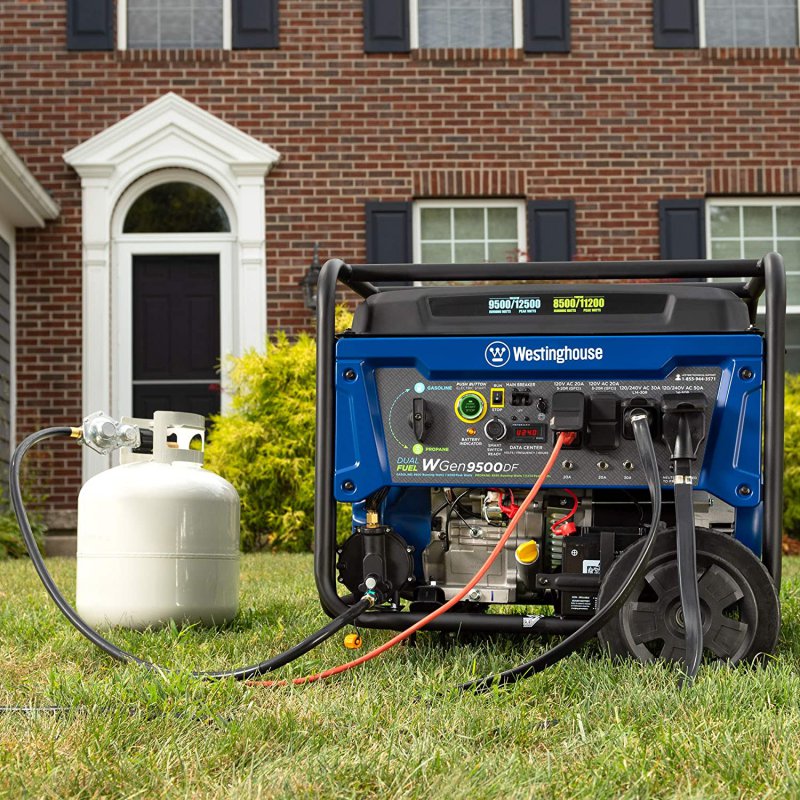
Propane is available in stored tanks. This offers the advantage of easy storing at the site and can be taken along easily for tailgating or camping. Moreover, when the generator runs on propane, it generates very little noise. But, the power output will be less compared to gasoline or diesel. The gasoline burns much cleaner than any other fuel, and this makes it the best choice to have in a dual fuel generator as a second fuel.
The issue with the propane is its availability. In some remote towns, it might not be easily available. Also, as propane is available in different sized tanks, a bigger tank will decrease the portability.
4. Natural Gas
Same as propane, the natural gas burns cleaner and emits very low emissions. The generator which uses natural gas will be more fuel-efficient, but the power generated will be less, about 30% less than the gasoline. A simple downside is that onsite storage is not possible as it is available as a connection at home; the generator directly gets connected to the natural gas line. It is a reliable source and will be available in emergencies too, but due to natural disasters like earthquakes, the line might get damaged, and the fuel may not be available.
Natural gas engines produce less noise. Also, keep in mind that the starting time is low for this fuel, so a generator will take time after the starting.
Difference Between the Bi-Fuel and Dual-Fuel Generators
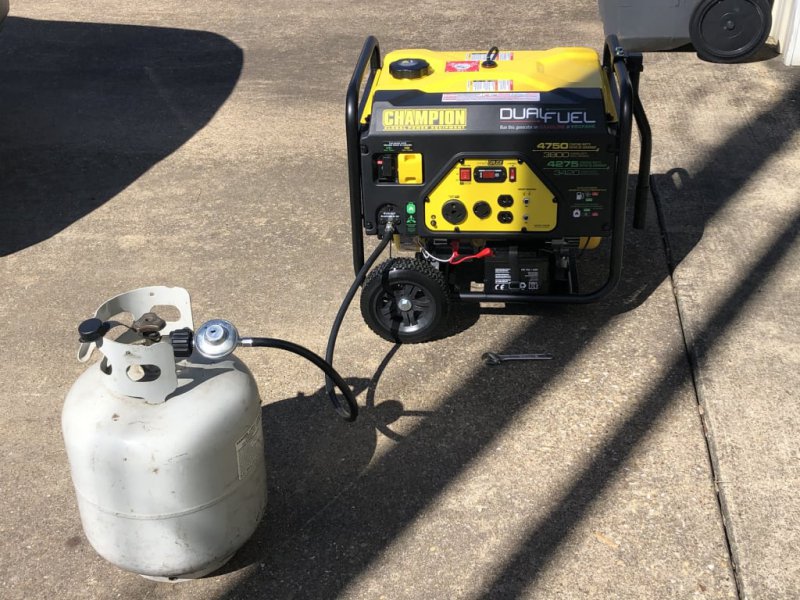
If you don’t know the concept behind those two terms, then you might get confused and may end up with the generator, which you may not have anticipated. The terms Bi-fuel and Dual-fuel we have defined here are referred to as how the Department of Energy uses them. For industrial purposes, it might be another way around.
A dual fuel generator is the one in which two fuels can be used as a mixture or individually. If both fuels are available, then the generator starts on one fuel, and another fuel will be added to it. The addition of the fuel will continue until the burning of that mixture offers maximum efficiency.
An important thing to note here is that the generator might be able to run on any of the fuel accessible but to start it, a specific fuel will be required; it can’t start on the other fuel. Take the example of Diesel and Natural Gas as two fuels. To start the generator, you must have diesel at hand, and it can’t start on natural gas.
This is because the ignition temperature for gasoline is lower compared to natural gas. Once the generator gets warmed up and reaches the necessary temperature, then it can run on natural gas.
As opposed to dual-fuel generators, the bi-fuel generators don’t work on the mixture of fuels, and they run either one of the two fuels. The engines of these generators are designed to automatically choose the most efficient fuel from the available two fuels. Manual bi-fuel generators are also there, which will let the user decide which fuel to use. The changing of fuel for them will be a simple process.
This means in the absence of one fuel and another one can always be used, whether it is a dual fuel generator or bi-fuel generator.
Benefits of a Dual Fuel Generator
Dual-fuel generators offer many advantages over traditional generators. For reference, we have taken an example of a dual fuel generator that works on diesel and natural gas.
1. Efficiency
Because they can use the mixture of fuels, their efficiency increases drastically. The mixture of diesel and natural gas is so made that it offers the optimal operating conditions, but the use of only diesel won’t be that efficient.
For a medium load, the efficient mixture is 75% natural gas and 25% diesel. It needs to be modified on higher loads.
2. Fuel options
There are a variety of generators available in the market which offers different fuel types which you can use. You can choose the dual fuel generator, which may have a combination of any of these gases. Natural gas, propane, diesel, gasoline, LP vapor, the generators can have a combination of any two fuels from those.
The choice of fuel should depend on the availability of those fuels nearby in your locality. When one fuel is depleted, you can always use another one. Also, If natural gas is one of the two fuels, then the onsite storage need will be eliminated.
3. Cost-Effective
The initial investment in the dual fuel generator is more, and they will cost 10 to 15 % more than the conventional generators. But, due to their ability to run on two fuels, along with other advantages, they will have a lower operating cost. Besides, they are easy to use and operate. Also, they consume the fuel at a lower rate that means no frequent refills will be required.
4. Eco-Friendly
A dual fuel generator mostly runs on a mixture of two fuels. So, compared to when only diesel has been used, the generator on the mixture of diesel and natural gas emits considerably fewer carbon emissions.
Conclusion
Dual fuel generators are the best when it comes to portable power, and they offer many advantages, as we have just discussed. If you want to buy one, then first check your local fuel availability and then only invest in a suitable choice. Moreover, these are easy to use and simple to operate generators, but still, to get a thorough understanding of different functions, features, and maintenance needs, you should refer to the user manual.

